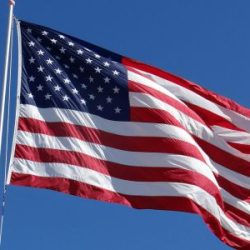To the surprise of no one, the UK Supreme Court (UKSC) has finally ruled that an artificial intelligence (AI) cannot be an inventor for the purposes of UK patent law. This judgment accords with the decisions of the lower courts in the UK and the initial ruling of the UKIPO. It also reflects similar findings from most of courts around the world where the claimant, Dr Thaler, brought similar actions.
The UKSC has held:
- An ‘inventor’ within the meaning of the Patents Act 1977 must be a natural person. Dr Thaler’s AI, Dabus, is not a person at all, let alone a natural person
- There was, as such, no ‘inventor’ through whom Dr Thaler could claim any right to obtain a patent, and the fact that Dr Thaler was Dabus’ owner did not assist him
- The Hearing Officer for the comptroller was entitled to hold that Dr Thaler’s patent applications were taken to be withdrawn for failure to satisfy the relevant provisions of the Act.
The court addressed the ‘qualified requirements’ of the relevant provisions of the 1977 Act. Under those provisions, an applicant for a patent must (if not themselves an inventor) identify the person whom they believe to be (rather than who is) the inventor. Similarly, such an applicant must only indicate (rather than establish) the derivation of their right to be granted the patent.
However, the court held that these qualifications did not save Dr Thaler’s patent applications, which identified Dabus as the inventor and claimed that Dr Thaler’s rights derived from his ownership of Dabus. The purpose of the qualifications is to ensure that genuine errors made by the applicant purporting to identify the inventor or explaining how the applicant derived the right to make the application should not prevent the applicant from being granted a patent, but they do not give the applicant free rein to provide uninformative or incomplete information in their patent applications.
To my mind, though, the real conclusion of the judgment comes around four-fifths of the way through, in a paragraph that quotes the Court of Appeal judgment: “If patents are to be granted in respect of inventions made by machines, the 1977 Act will have to be amended.”
In other words, the real question is: will legislators in the UK (and elsewhere) now seek to change the law to allow AI to be named as an inventor on patent applications, or to allow some other mechanism by which developments generated by AI might be afforded patent protection?
The Supreme Court judgment itself explicitly mentions “policy issues about the purpose of a patent system, the need to incentivize technical innovation and the provision of an appropriate monopoly in return for the making available to the public of new and non-obvious technical advances, and an explanation of how to put them into practice across the range of the monopoly sought,” even though addressing those issues formed no part of the judgment.
Some commentators have asked whether legislators will want to reward AI owners for merely building and feeding better AI systems by granting patents for the output from those systems.
However, to my mind, the key question is whether the legislators are happy to allow potentially innumerable new and non-obvious technical developments generated by ever-improving AI to fall between the cracks of current patent law and be unpatentable. If that happens, those developments, some of which may be valuable to society at large, might simply be kept secret by the owners of the AI that generated them. While some of those developments may be amenable to reverse engineering, some of them will not. Those developments may then be lost forever, like flexible glass and Greek fire.
Is that a desirable outcome for legislators and society, particularly where the law relating to novelty and inventive steps is completely agnostic to what the inventor did when formulating the invention, and indeed to what the inventor is? All that matters for novelty and inventive step is what the notional skilled person, which is a legal construct, would have thought about the claimed invention.

Written by Matthew Jones
Partner, RPC
You may also like…
The quiet power of confidentiality clubs in SEP litigation
In standard essential patent (SEP) disputes, especially those involving FRAND (Fair, Reasonable, and...
A $10 million patent win reduced to a $1 lesson in damages
In a decision that will resonate as a stark warning to patent litigants, the US Court of Appeals for the Federal...
Chevron’s ghost and the return of deference
Chevron U.S.A. Inc. v. Natural Resources Defense Council, 467 US 837 (1984) instructed courts to defer to an agency’s...
Contact us to write for out Newsletter














